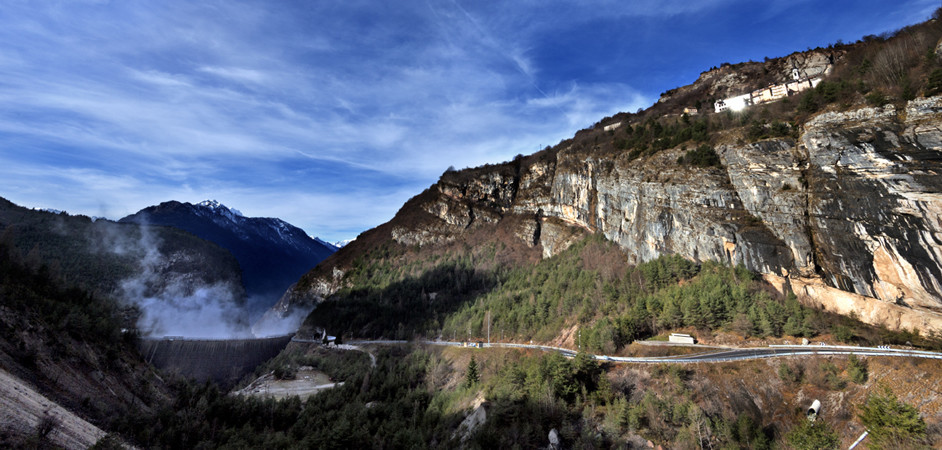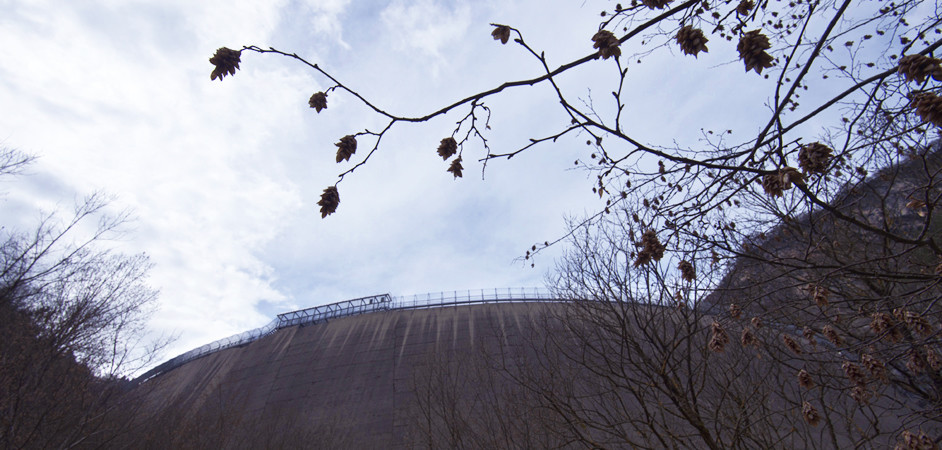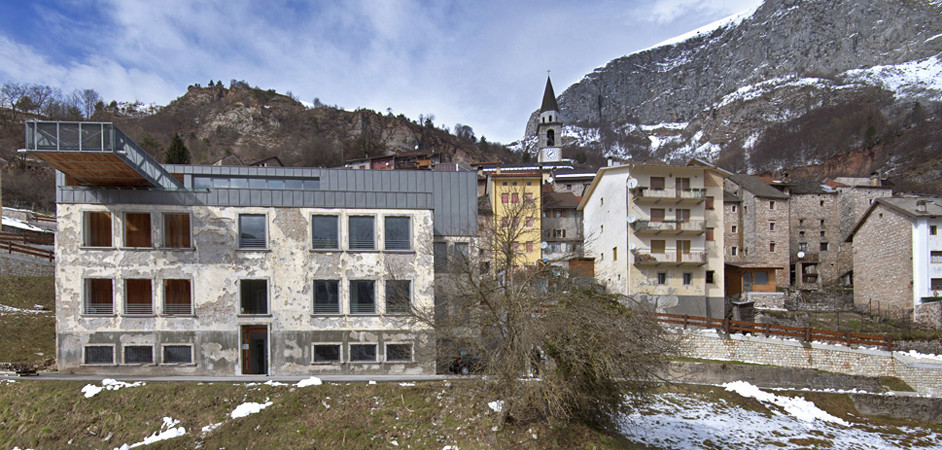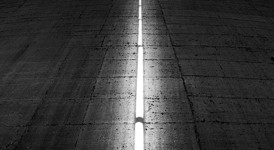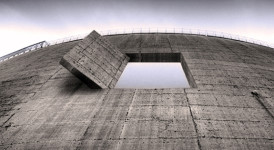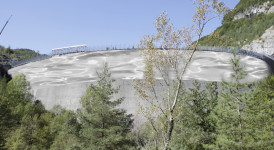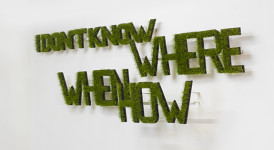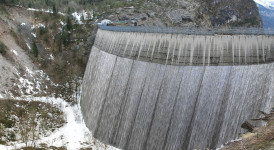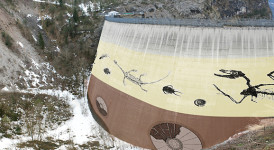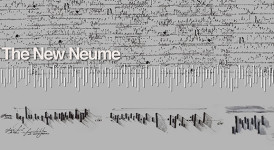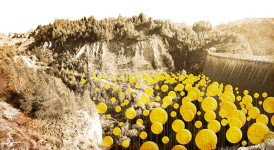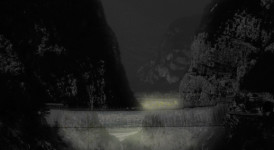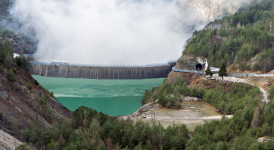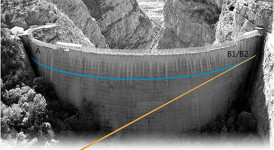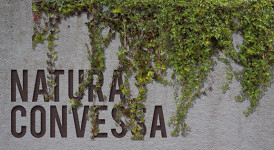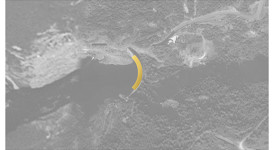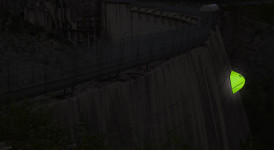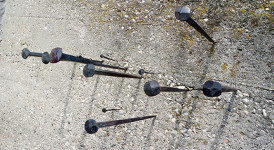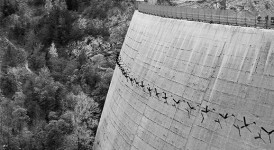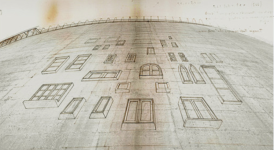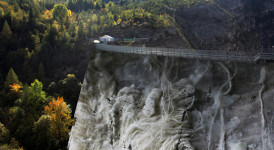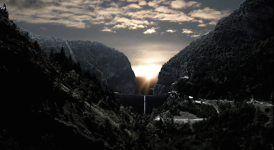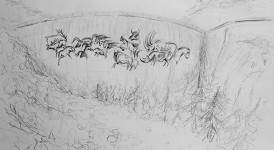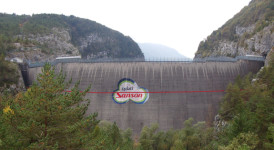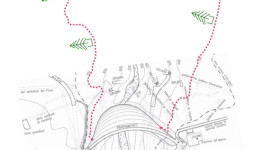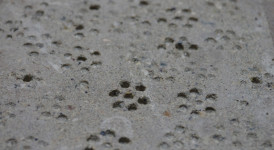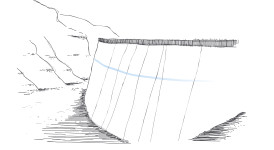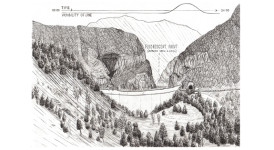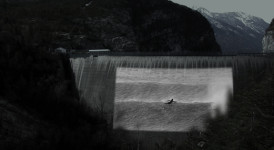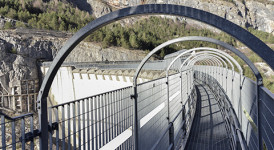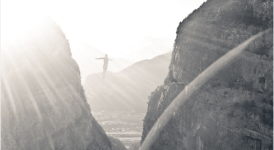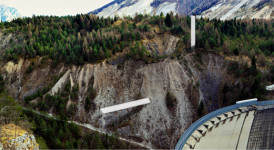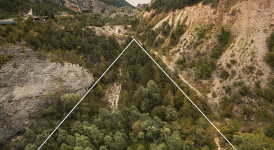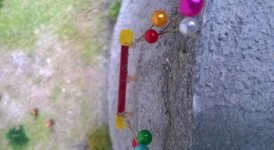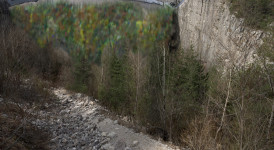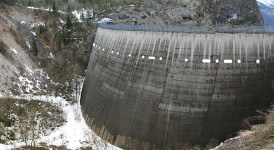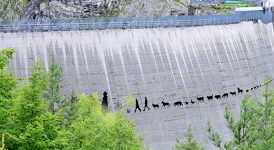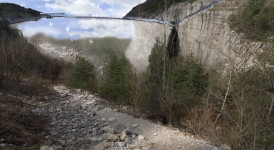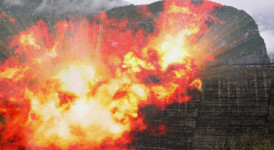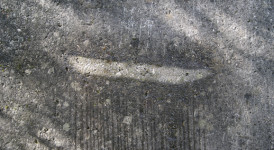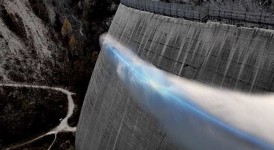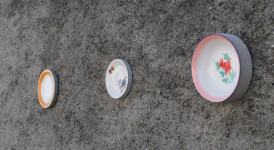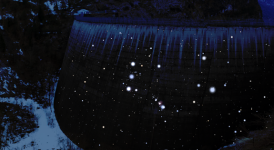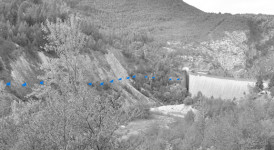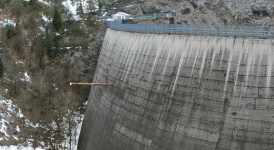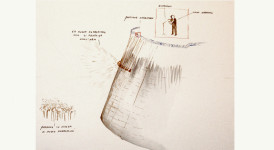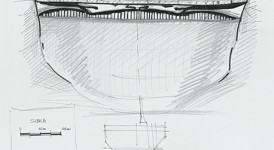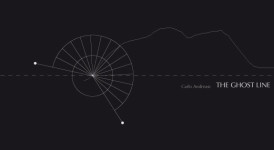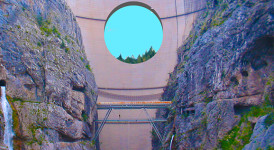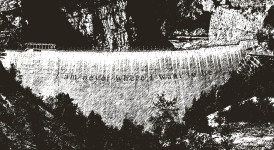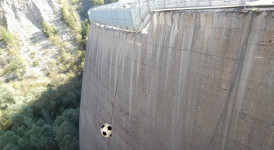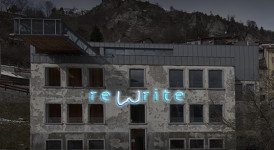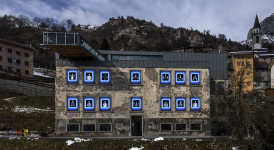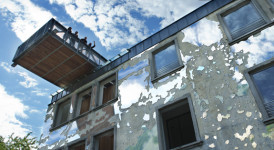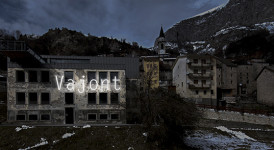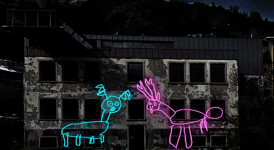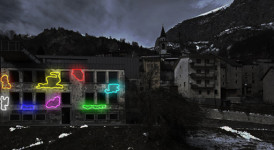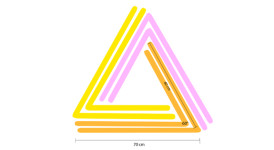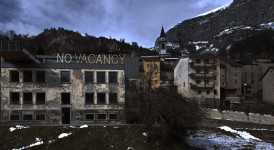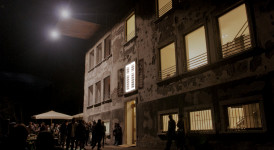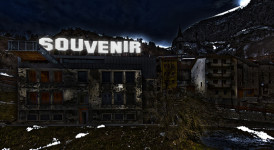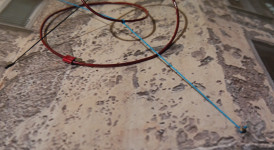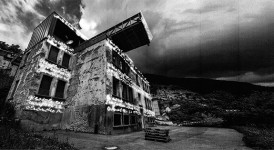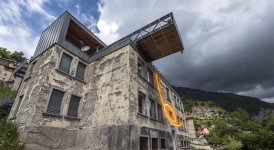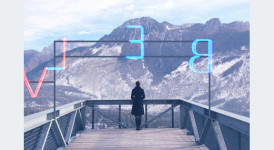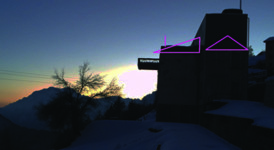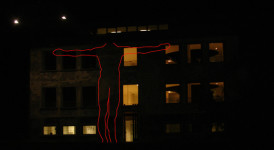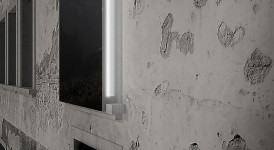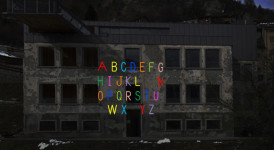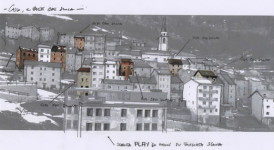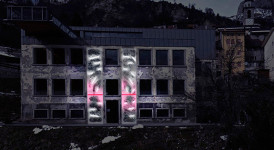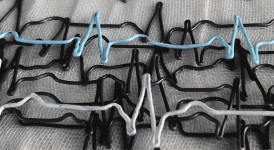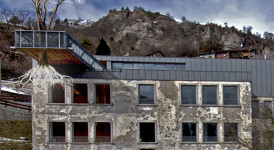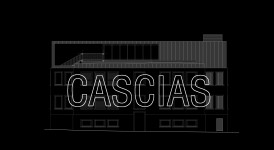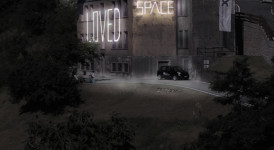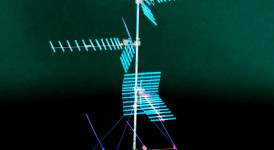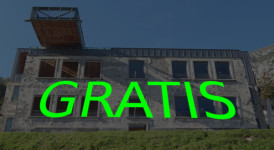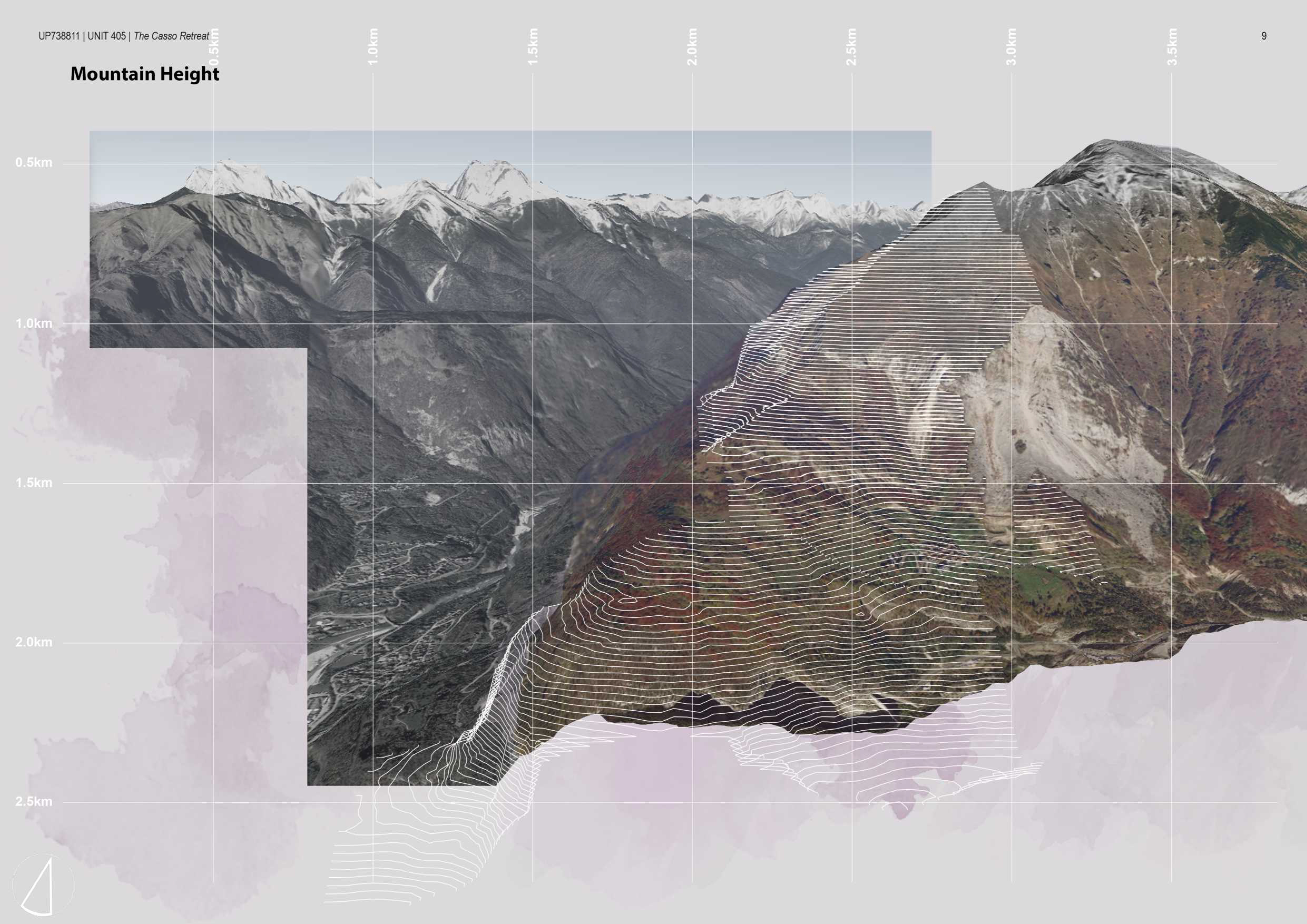Meaning and composition of the Jury
Twocalls is a cultural effort, and a contest of ideas, prior to being an artistic contest. The absolute specificity of the context of the Vajont, its problematic nature, confer peculiar value and weight to each thought and action that is carried out here.
For this reason, it was decided to grant a characteristic of cultural heterogeneity to the Jury of the Contest.
Beside the directors and curators of some important Italian Museums of contemporary art, we can thus find place in the Jury for other relevant intellectual personalities, whom refer to different areas of the cultural reflection and research, like sociology and anthropology, the safeguard and esteem of the environment and landscape, the redefinition and valorisation of the resources through culture and art.
The Jury does not therefore include exclusively contemporary art experts, because it is our belief that this Contest constitutes, first of all, a great and open opportunity to rethink the place in which it takes place.
In the area of the Tragedy, the human comes today to think, talk, create, and in thus here, finally, a cultural and intellectual construction site, unprecedented and vital, is started that wants to integrate, connect, a multiplicity of gazes and voices.
The heterogeneity of the Jury is, in this sense, a fundamental value, that renders the experience of the Contest, that is physically determined through the artistic medium, a whole, well-rounded human experience, other than cultural and critical, that in this manner offers itself to everybody, and not only to a determined category of experts.
The Jury will carry out its evaluations taking into consideration different elements, among which: the formal quality and the strength of the idea; the re-innovative character of the overlook related to the history of the location; the ability to re-elaborate concepts like Tragedy and Memory, in the eventuality they’ll be handled and expressed; the artwork‘s ability to communicate, both relating to the local communities and history and the emblematic universality of this location; the relationship with the territory, in physical and cultural terms; the reflection on the context, and on the landscape, or landscapes (physical landscape, human landscape, landscape of the tragedy, new landscape); the sustainability of the intervention, from the ideal, formal, environmental, and economical point of view.
_______________________________________________________________________________
Twocalls è un’impresa culturale, e un concorso d’idee, prima ancora che un concorso artistico. La specificità assoluta del contesto del Vajont, la sua problematicità, conferiscono valore e peso particolari ad ogni pensiero o azione che si decida di svolgere qui.
Per questo motivo, si è deciso di concedere un carattere di eterogeneità culturale alla Giuria del Concorso.
Accanto ai direttori e curatori di alcuni importanti Musei italiani d’arte contemporanea, trovano posto quindi nella Giuria altre personalità intellettuali significative, che fanno capo ad àmbiti differenti della riflessione e della ricerca culturale, come la sociologia e l’antropologia, la tutela e valorizzazione del paesaggio e dell’ambiente, la ridefinizione e valorizzazione delle risorse attraverso cultura ed arte.
La Giuria non include dunque esclusivamente esperti d’arte contemporanea, perché si ritiene che questo Concorso costituisca in primis una grande ed aperta opportunità di ripensare il luogo in cui si svolge.
Nell’area della Tragedia, l’uomo viene oggi a pensare, parlare, fare, e in questo modo si avvia qui, finalmente, un cantiere culturale, e intellettuale, inedito e vitale, che vuole integrare, connettere, una pluralità di sguardi e di voci.
L’eterogeneità della Giuria è, in questo senso, un valore importantissimo, che rende l’esperienza del Concorso, che si determina fisicamente attraverso il medium artistico, un’esperienza umana, oltre che culturale e critica, integrale, che in tal modo si offre a tutti, e non solo ad una determinata categoria di esperti.
La Giuria compirà le proprie valutazioni tenendo conto di diversi elementi, tra i quali: la qualità formale e la forza dell’idea; il carattere rinnovativo dello sguardo rispetto alla storia del luogo; la capacità di rielaborazione di concetti quali Tragedia e Memoria, nel caso essi vengano trattati ed espressi; la capacità di comunicazione dell’opera, sia rispetto alle comunità e alla storia locali, che rispetto all’universalità emblematica di questo luogo; il rapporto con il territorio, in termini fisici e culturali; la riflessione sul contesto, e sul paesaggio, o sui paesaggi (paesaggio fisico, paesaggio umano, paesaggio della tragedia, nuovo paesaggio); la sostenibilità dell’intervento, dal punto di vista ideale, formale, ambientale, economico.
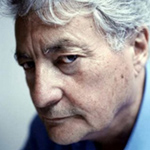
Marc Augé
French sociologist, anthropologist, ethnologist.
He has been director of the École des Hautes Études en Sciences Sociales in Paris and director of the Office for the scientific research and overseas technic (IRD).
In 1992 he introduced in his essay Non-lieux. Introduction à une anthropologie de la surmodernité the concept of ”non-place”.
–
Sociologo, antropologo, etnologo francese.
È stato direttore dell’École des Hautes Études en Sciences Sociales di Parigi e direttore dell’Ufficio per la ricerca scientifica e tecnica d’oltremare (IRD).
Nel 1992, ha introdotto, all’interno del saggio Non-lieux. Introduction à une anthropologie de la surmodernité, il concetto di “non-luogo”.
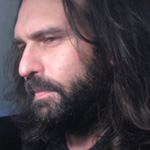
Pierluigi Basso Fossali
is full professor of semiotics at University Lumière Lyon 2 and is member of the ICAR Laboratory at the École Normale Supérieure di Lione. He is co-director of the international review Signata. Annales des sémiotiques (Liegi, Puleg) and supervise the book series Teorie resistant (Pisa, ETS). Among his contributions, must be mentioned those about art theory (Il dominio dell’arte, 2002), about the cinema (Confini del cinema, 2003; Il pensiero figurale di D. Lynch, 2006) and about paintings (Il trittico 1976 di Francis Bacon, 2013).
–
è professore ordinario di Semiotica presso l’Università Lumière Lyon 2 ed è membro del Laboratorio ICAR presso l’École Normale Supérieure di Lione. È condirettore della rivista internazionale Signata. Annales des sémiotiques (Liegi, Pulg) e dirige la collana Teorie resistenti (Pisa, ETS). Tra i suoi contributi, si segnalano gli apporti sulla teoria dell’arte (Il dominio dell’arte, 2002), sul cinema (Confini del cinema, 2003; Il pensiero figurale di D. Lynch, 2006), sulla pittura (Il trittico 1976 di Francis Bacon, 2013).
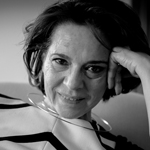
Maria Centonze
Born in Salento, lives and works in Turin. After the Academy of Fine Arts and a period of training in film and theater, she worked as a teacher and then as director of the cultural association Sartie for which she conceived and organized events and exhibitions in collaboration with public and private institutions.
She is curator at the Fondazione Merz since 2008.
–
Nata nel Salento, vive e lavora a Torino. Dopo l’Accademia di Belle Arti e un periodo di formazione nel cinema e nel teatro, ha lavorato come insegnante e poi come direttore dell’associazione culturale Sartie per la quale ha ideato e progettato eventi e mostre in collaborazione con istituzioni pubbliche e private.
È curatrice alla Fondazione Merz dal 2008
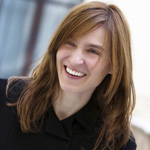
Cristiana Collu
From 2012 to January 2015, director of Mart, Museum of modern and contemporary art of Trento e Rovereto which, under her management, has established itself internationally and has ushered in a new line focused on innovation, sustainability and participation.
She’s part of the curatorial commission of Premio Terna and she’s professor on contract at the University of Trento.
Before, she was director of MAN_Art Museum of the Province of Nuoro. In 2012 she was member of the Commission for the Relaunch of culture heritage and tourism for the italian Ministry of culture and also member of the Board of Directors of AMACI, professor on contract at the university La Sapienza in Rome, The University of Cagliari and the University of Sassari.
–
Dal 2015 è direttore della Galleria Nazionale d’Arte Moderna di Roma.
Dal 1997 al 2012 è stata direttrice del MAN, Museo d’Arte della Provincia di Nuoro, dal 2012 al 2015 del mart, museo di arte moderna e contemporanea di trento e rovereto e, nel 2015, dell’Isre, l’Istituto Superiore Regionale Etnografico della Sardegna.
professore a contratto presso l’università la sapienza di roma, l’università di cagliari, l’università di sassari e l’università di trento.
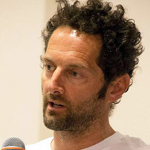
Gianluca D’Incà Levis
Creator and curator of dolomiti contemporanee, and director of the new venue of casso. ever since 2010, he’s been launching a series of reflections and of curatorial projects that link contemporary art, recovery of industrial or civil disused sites, and mountains.
the idea of producing innovative images is central, working on the natural environment in a critical and projective manner, and rejecting the stereotypical readings.
starting from 2014, he’s been carrying out a study at the ca’ foscari university of venice’s department of management.
–
Ideatore e curatore di Dolomiti Contemporanee, direttore del Nuovo Spazio espositivo di Casso. A partire dal 2010, ha avviato una serie di progetti curatoriali e di riflessioni che mettono in relazione l’arte contemporanea, il recupero di spazi industriali o civili dismessi, e la montagna.
Centrale l’idea di produrre immagini rinnovative, operando sull’ambiente naturale in modo critico e proiettivo, e rifiutandone le letture stereotipe.
Dal 2014, svolge attività di ricerca ricerca presso il Dipartimento di Management dell’Università Ca’ Foscari di Venezia.
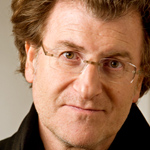
Alfredo Jaar
artist, architect and filmmaker who lives and works in New York. His work has been shown extensively around the world. He has participated in the Biennales of Venice (1986, 2007, 2009, 2013), São Paulo (1985, 1987, 2010) as well as Documenta in Kassel (1987, 2002). A major retrospective on his work took place in 2012 at three institutions in Berlin: Berlinersche Galerie, Neue Gesellshaft für bildende Kunst e.V. and the Alte Nationalgalerie.
He has realised more than sixty public interventions around the world. More than fifty monographic publications have been published about his work.
–
artista, architetto e filmmaker cileno. vive e lavora a new york.
ha realizzato più di sessanta interventi di arte pubblica nel mondo e partecipato a diverse edizioni della biennale di venezia (1968, 2007, 2009, 2013), di san paolo in brasile (1985, 1987, 2010) come anche a documenta a kassel (1987, 2002).
nel 2012, un’importante retrospettiva sul suo lavoro è stata ospitata dalla berlinische galerie, dalla neue gesellschaft für bildende kunst e.v. e dall’alte nationalgalerie.
nel 2014 un’altra retrospettiva al museum of contemporary art kiasma di helsinki.
sul suo lavoro sono state redatte più di cinquanta pubblicazioni monografiche.
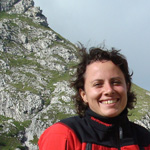
Marcella Morandini
since January 2014 is Secretary General of the Foundation Dolomites UNESCO. She studied Humanities and Geography in Verona, Freiburg im Breisgau (D) and Salzburg (A). With wide ranging interests concerning the Alps and the development of cross border mountain areas she gained a significative experience at international level working for the Permanent Secretariat of the Alpine Convention in Innsbruck (A) and Bolzano-Bozen.
–
dal gennaio 2014 è segretario generale della Fondazione Dolomiti Unesco. Ha studiato scienze umanistiche e geografiche a Verona, Freiburg mi Breisgau (D) e Salisburgo (A). Interessata ad ampio raggio allo studio delle Alpi e dello sviluppo delle aree transfrontaliere, ha acquisito una notevole esperienza a livello internazionale lavorando per il Segretariato Permanente della Convenzione delle Alpi a Innsbruck (A) e Bolzano.
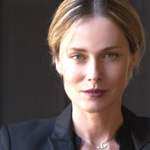
Franziska Nori
Director of the Frankfurter Kunstverein. From March 2007 to July 2014 director of the Centre of Contemporary Culture Strozzina at Palazzo Strozzi in Florence, responsible for the artistic programme. From 2000 – 2003 she was head of the department for digital art and culture at the Museum of Applied Arts (MAK) Frankfurt, which conceived the first museum collection for digital artefacts (digitalcraft.org) along with exhibitions devoted to phenomena in digital culture. She graduated at the Johann Wolfgang Goethe University in Romance Philology, Cultural Anthropology and Art History. Since 1994 she has worked as independent curator for modern and contemporary art for international institutions including the Schirn Kunsthalle in Frankfurt, the Museum für Moderne Kunst in Vienna, the Museo Nacional Reina Sofia in Madrid and the Lucio Fontana Foundation.
–
è direttore del Frankfurter Kunstverein. Da marzo 2007 a luglio 2014, è direttrice del Centro di Cultura Contemporanea Strozzina (Fondazione Palazzo Strozzi, Firenze), del quale è responsabile per il programma artistico del centro e curatrice delle mostre. Laureata in antropologia culturale, letterature romanze e storia dell’arte presso l’università Johan Wolfgang Goethe di Francoforte. Dal 2000 al 2003 ha diretto il dipartimento di arti digitali “digitalcraft” presso il Museo di Arti Applicate di Francoforte (MAK). Dal 1994 al 1997 ha lavorato come curatrice indipendente d’arte moderna e contemporanea per istituzioni internazionali come la Schirn Kunsthalle di Francoforte, il Museum für Moderne Kunst di Vienna, il Museo Nacional Reina Sofia di Madrid e la Fondazione Lucio Fontana.
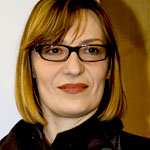
Angela Vettese
art critic and curator. Since 2013, she is Deputy Mayor for Cultural Activities and Development of Tourism of the Municipality of Venice. Director of the Graduate Programme in Visual Arts at the Faculty of Arts and Design of the IUAV University (Venice).
She has taught at numerous fine arts academies and at the Bocconi University in Milan.
From 2002 to 2013 she has been President of the Bevilacqua La Masa Foundation in Venice. She collaborated with the Fondazione Antonio Ratti in Como (1995-2004) the Galleria Civica in Modena (2005-2009) and the Fondazione Arnaldo Pomodoro in Milan (2008-2010).
Since 2008 she’s member of the Scientific Commitee of the François Pinault Foundation, Venice.
She wrote several books. Since 1986, she has been writing for La Domenica, cultural magazine of the financial newspaper Il Sole 24 Ore.
–
critica d’arte e curatrice. Dal 2013 è Assessore alle Attività Culturali e allo Sviluppo del Turismo del Comune di Venezia. Ha fondato nel 2001 il corso magistrale di Arti Visive della Università IUAV (Venezia). Ha insegnato in diverse Accademie di Belle Arti e presso l’Università Bocconi di Milano. Dal 2002 al 2013 è stata presidente della Fondazione Bevilacqua La Masa di Venezia. Ha collaborato con la Fondazione Antonio Ratti (1995-2004) la Galleria Civica di Modena (2005-2009) e la Fondazione Arnaldo Pomodoro di Milano (2008-2010).
Dal 2008 è membro del Comitato scientifico della François Pinault Foundation a Venezia.
É autrice di numerose pubblicazioni. Dal 1986 scrive per La Domenica, domenicale culturale de Il Sole 24 Ore.

alfredo jaarmarcella morandinifranziska nori
angela vettese

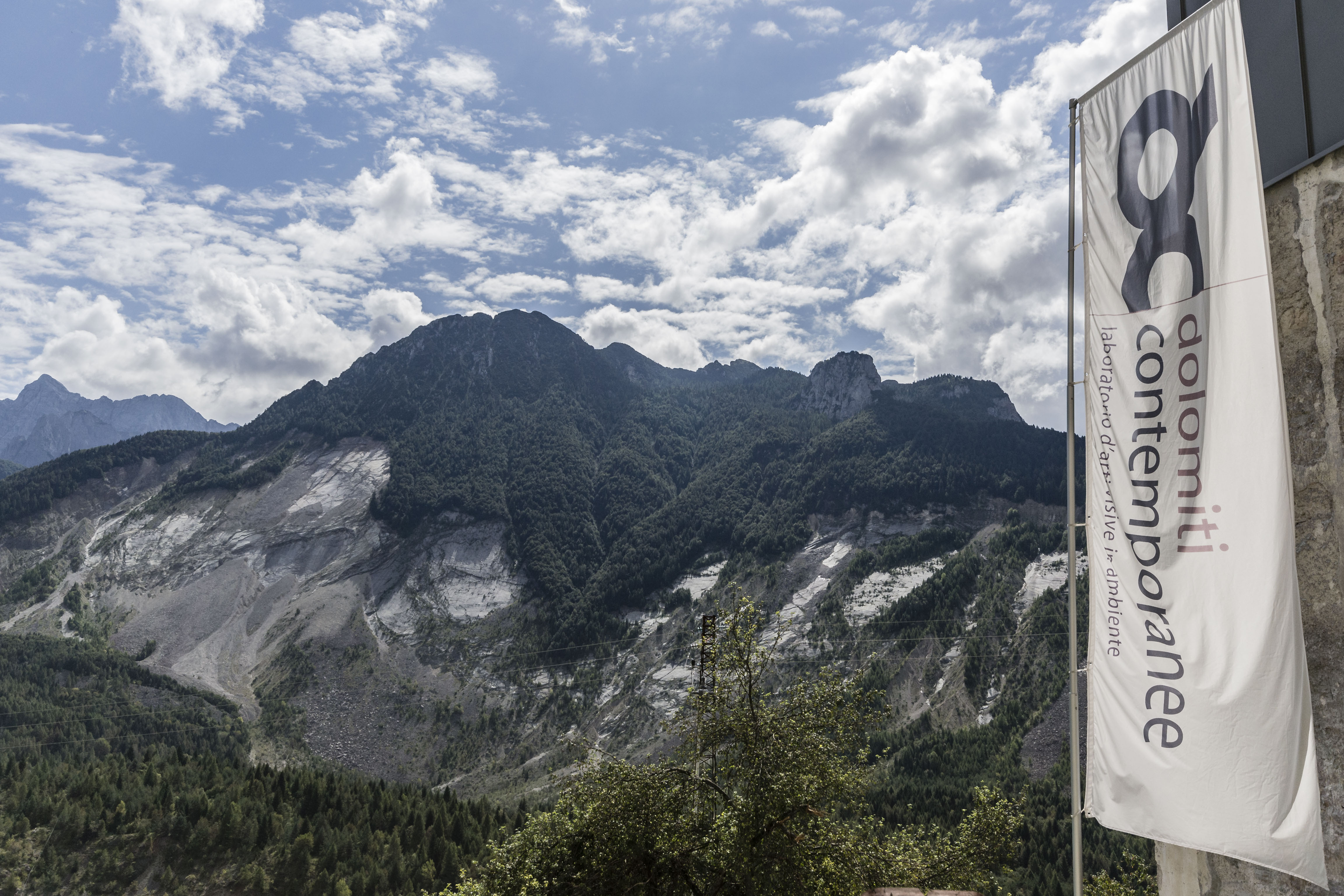
Tuesday, June 15th 2021, 2 – 4 PM, webinar panel:
two calls for vajont: fase _restart.
Vajont: [...]

